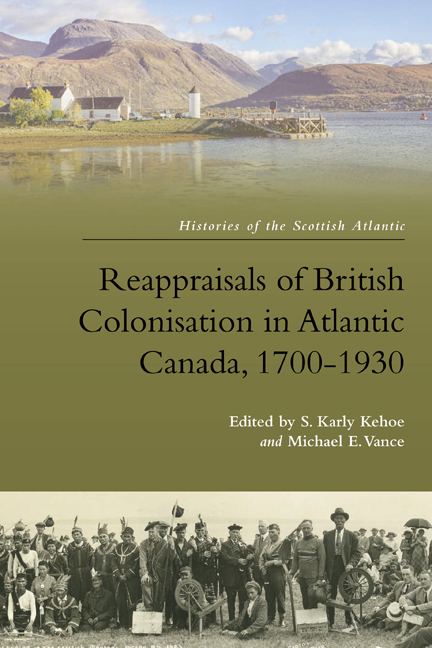11 - The Mi’kmaq, the Pattersons and Remembering the Scottish Colonisation of Nova Scotia
Published online by Cambridge University Press: 10 October 2020
Summary
On a cloudless day in July 1923, Harris H. Reid set up his circuit camera on the outskirts of the town of Pictou, Nova Scotia – levelling it with his tripod on the uneven ground of Norway Point in order to take a collective portrait of the assembled gathering. The year before, he had taken panoramic photographs of the dedication ceremony for the Acadian Memorial Church at Grand Pré in the Annapolis Valley, helping to promote the ‘Land of Evangeline’ as one of the central tourist draws in Nova Scotia. These images likely assisted him in securing the role of official photographer the following summer in Pictou for the Hector celebration, which had been organised to commemorate the 150th anniversary of the arrival of the emigrant vessel from the Highlands of Scotland. The Hector celebration, which was advertised throughout North America, aimed to attract both descendants of the original settlers and others wishing to celebrate Scottish heritage. As with the creation of the Acadian Memorial Church on the Grand Pré site of the original building that had witnessed the notorious expulsions of the eighteenth century, the Pictou event sought to combine a pride in heritage with a broader appeal to tourists. For the Pictou gathering, Reid, himself of Scottish descent, took panoramic shots of the town as well as the open-air church service at Loch Broom on East River, where the Hector passengers had erected their Presbyterian church after arriving in the colony. Nevertheless, Reid's Norway Point photograph was the most striking image taken that day. It captured a large number of settler descendants, some dressed in what purports to be period costume, alongside a group of approximately forty Mi’kmaw men, women and children in traditional dress. The Mi’kmaw men appear in feathered headdress and embroidered jackets, while several of the women and girls are wearing traditional hoods and beaded dresses.
Reid's photograph clearly documents the presence of Indigenous peoples prior to European colonisation, but in this regard it was exceptional. The Mi’kmaw participation in the Hector celebrations, which stretched over the week of 15–22 July, was barely mentioned in the press reports of the events.
- Type
- Chapter
- Information
- Publisher: Edinburgh University PressPrint publication year: 2020



